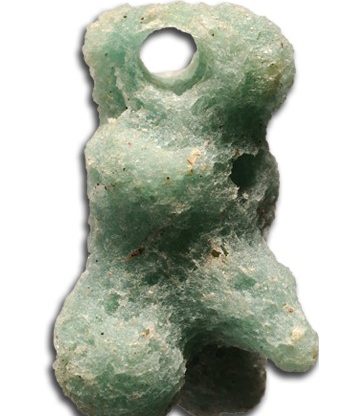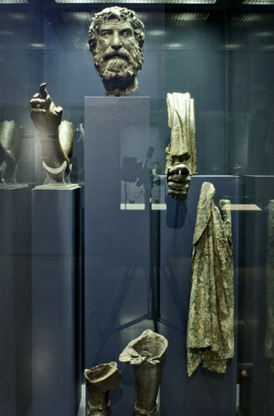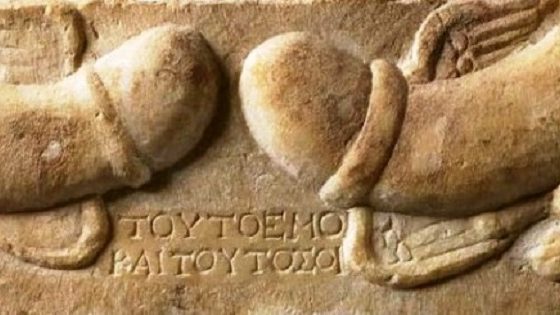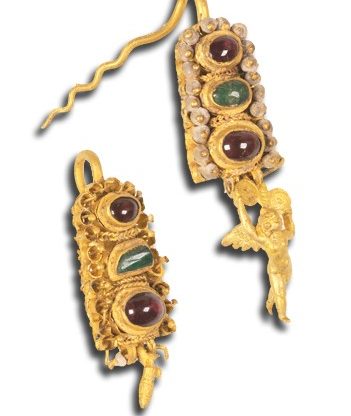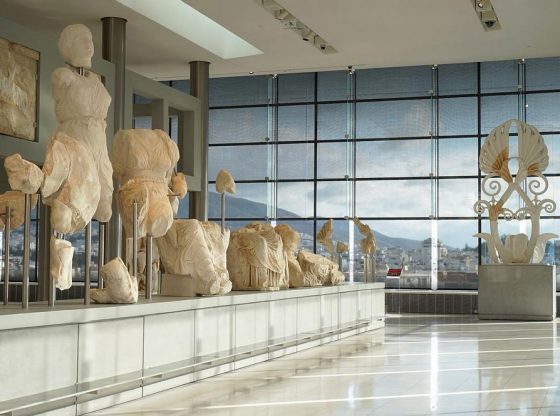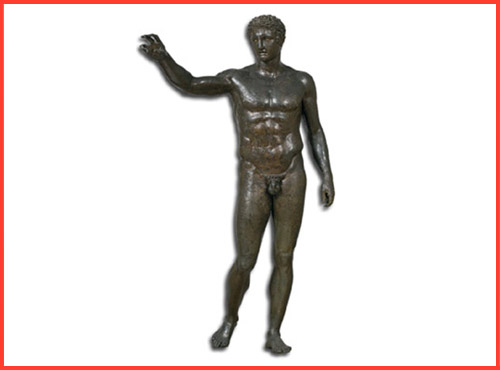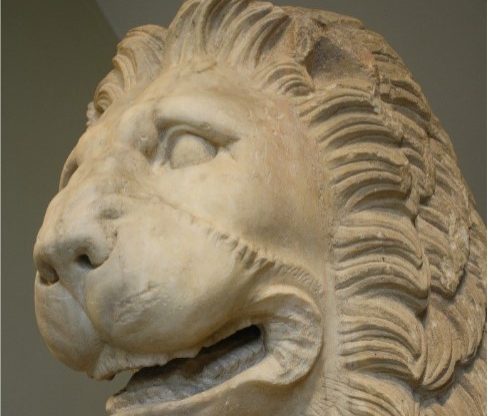Phallos, Phallus-shaped pendant with suspension hole
Material: Green glass paste
Provenance: Antikythera shipwreck. From the material retrieved in 1976
Date: 1st c. BC
Dimensions: H. 0.021 m
Inv. no: Athens, National Archaeological Museum, 30664
Exhibition Place:Temporary Exhibitions Wing, Room II
Usually made of faience or glass paste, phallus- shaped pendants were thought to have apotropaic properties. Talismans of this type were common in Hellenistic and Roman Egypt and in most Roman provinces.in fact, they were intended particularly for children. Similar pendants, usually dated to the 1st c. BC, have been found at Delos and Dura-Europos also dated to the 1st c. BC.
The pendant’s discovery in the shipwreck suggests that a young boy or girl slave may have been aboard the ship.The tradition of talismans began in Egypt, which is considered the home of magic. The great variety of Egyptian charms influenced the production of contemporary and later ones -from prehistoric Aegean pendants to Christian crosses.
Talismans were thought to protect against and intimidate evil spirits
http://www.namuseum.gr/object-month/2013/feb/feb13-en.html


